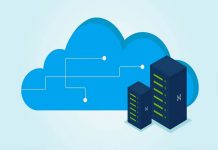Migrating to the cloud used to be a daunting task. You had to worry about data security, network performance, and compatibility issues. But thanks to advancements in technology and the cloud migration services offered by leading providers, migrating your business to the cloud is now easier than ever. This article will discuss cloud migration services and the top strategies you should know before making the switch.
What Are Cloud Migration Services?
Cloud migration services refer to moving data, applications, and other business-critical resources from an on-premises environment to a cloud computing platform. There are many Benefits Of Cloud Migration for businesses, including increased agility, scalability, and disaster recovery. However, migrating to the cloud can also be complex and time-consuming. That’s where cloud migration services come in.
A cloud migration service provider can help you assess your current infrastructure and develop a plan for migrating to the cloud. They will also handle the technical aspects of the migration, ensuring that your data and applications are transferred seamlessly and securely. In addition, they can provide ongoing support and management of your cloud environment, helping you get the most out of the cloud.
Many different cloud migration services are available, each with its own set of features and benefits. Some of the most popular cloud migration services include Amazon Web Services (AWS), Microsoft Azure, and Google Cloud Platform (GCP).
Choosing a cloud migration service for your business can be a challenge. There are several factors to consider, such as:
Cost
The cost of cloud migration services can vary depending on the provider you choose and the features you need. It’s important to compare pricing plans and get quotes from multiple providers before deciding.
Ease Of Use
Some cloud migration services are easier to use than others. If you’re not familiar with cloud computing, choosing an easy service to set up and use is crucial.
Features And Functionality
Each cloud migration service offers different features and functionality. Make sure to choose a service that meets all of your business needs.
Security
Data security is a significant concern for businesses migrating to the cloud. Be sure to choose a provider that offers robust security features and is compliant with industry regulations.
Once you’ve considered all of these factors, you’ll be ready to choose your business’s exemplary cloud migration service.
Customer Support
No matter how good a cloud migration service is, there will always be times when you need help from customer support. Be sure to choose a provider that offers 24/seven customer support.
Top Cloud Migration Strategies
There are many different strategies for migrating to the cloud. The best strategy for your business will depend on many factors, such as the size of your business, the type of data you’re migrating, and your budget. Here are some of the most popular cloud migration strategies:
Rehosting
Also known as “lift and shift,” rehosting is moving an application from an on-premises environment to a cloud computing platform with minimal changes. It is often the simplest and quickest way to migrate to the cloud, as it doesn’t require any code changes or modifications to the application. However, it’s important to note that this approach may not suit all applications, as some may not be compatible with the cloud platform.
Rehosting is less disruptive than other migration strategies. Since you’re not making any changes to the code, there’s less risk of things going wrong. Additionally, rehosting is often less expensive than other strategies, as it doesn’t require any specialized skills or tools. Most importantly, rehosting can be done quickly, which is ideal if you need to migrate to the cloud urgently.
Refactoring
Refactoring involves modifying an existing application to make it compatible with the cloud. It may involve changing the code, the architecture, or both. Refactoring is often the best option when an application is already in production and cannot be rewritten from scratch. However, note not all applications can be easily refactored for the cloud. In some cases, it may be necessary to re-architect the entire application to achieve cloud compatibility. When considering a refactoring strategy, consult with a qualified cloud architect to ensure that the modifications will be successful.
Refactoring allows you to take advantage of the many features and benefits. By making code changes, you can optimize an application for the cloud and take advantage of features such as scalability and elasticity. Additionally, refactoring gives you more control over the application and how it runs in the cloud. As a result, this approach is often more suitable for mission-critical applications.
Repurchase
Repurchasing is buying a new application that is already compatible with the cloud. It requires you to purchase a new application and then migrate your data to it. However, repurchasing can also be the most straightforward way to migrate to the cloud. In many cases, you can easily transfer your existing data to the new application with little or no effort. As a result, repurchasing can be a viable option for companies looking to migrate to the cloud but do not have the time or resources to invest in developing a custom solution.
Retiring
Retiring an application is discontinuing its use and removing it from your environment. Often done when an application is no longer needed or is incompatible with the cloud. In some cases, you may be able to sell or donate the retired application to another organization. However, in most cases, the application will be removed from your environment and replaced with a new cloud-compatible solution.
When retiring an application, ensure all data has been backed up and migrated to the new system. Additionally, you should notify any users of the retirement and provide them with instructions on accessing the new system. Finally, you should update any documentation or manuals referencing the retired application. You can ensure a smooth and successful transition to the new system by following these steps.
Retain
Retaining an application means keeping it in your environment but not using it. You can do this when an application is no longer needed but may be needed in the future. When retaining an application, it is vital to ensure that the data is still accessible and that the application can be easily restarted if necessary. Additionally, you should update any documentation or manuals that reference the application. You can ensure that the application is available if it is ever needed again by taking these steps.
Cloud migration is a complex process that requires careful planning and execution. When choosing a migration strategy, there are many factors to consider, and no one approach is right for every situation. However, by understanding the different options available, you can decide which strategy is best for your organization. With the help of a qualified cloud architect, you can successfully migrate your applications to the cloud.
























